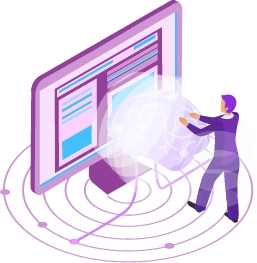
Modern banking places the customer at the core of all its strategies and processes. Simplicity and ease of use, convenience, and a seamless, personalized customer experience are key differentiators in banking today.

Features

Equal Installments

Zero Interest

No Strict Credit Checks
Buy Now Pay Later schemes are considered the fastest growing segment within the financial sector and is being regarded as the future of millennial finance. These are payment programs that gives the customer the option to break up the cost of purchases into equal installments over a period of weeks or months. These schemes are embedded into the point of sale, so customers don’t have to scramble for separate credit options. This and other features like zero interest on timely payments and no strict credit checks have made these schemes a hit amongst customers, especially those who are typically left out of the traditional credit ecosystem. The increasing demand for BNPL options has cost US banks between USD 8-10 billion in annual revenue to fintechs who offered these services.
![]()

Right now, there is a flurry of partnerships between fintechs and pure play BNPL firms. For example, Square acquired AfterPay, Amazon joined hands with Affirm, Zip and Capital Float. The space is likely to see many more new entrants either through partnerships or on their own like ICICI and Monzo. BNPL players allow their merchants to offer instalment financing to their end customers. Consequently, increasing number of retailers are now offering these services as they increase purchase value and reduce cart abandonment rates. Unfortunately, most banks have underestimated the BNPL segment and are not actively trying to leverage this lucrative new trend. By staying out of this segment, they stand to lose out on a growing value pool and on acquiring and growing a younger customer base. Some banks are trying to compete by offering post purchase instalments to manage credit card payments. But this pushes the customer away from the product page where the purchase decision is made and leaves money on the table.
![]()
 Leveraging The BNPL Opportunity
Leveraging The BNPL Opportunity
BNPL spend is expected to reach $995 billion in 2026, up from $266 billion 2021.2 This is a massive opportunity and banks must recognise that BNPL is an integral part of transforming the sector into an open experience-driven environment. With an API-driven architecture, they can integrate BNPL offerings into a partner ecosystem to create comprehensive experiences at par with pure play BNPL players. Banks need the speed and agility of the cloud to rapidly create, test, deploy and scale their solutions. Their years of experience, and deeper pockets put them in a far better position to underwrite larger loan amounts than any BNPL player. All they need now is the right technology partner to modernize their legacy infrastructure to serve this emerging new segment.
Mitigating The Risks With Technology

BNPL services have already garnered significant customer interest and banks can no longer afford to disregard them. They have the inherent advantage of high customer trust, and well-regulated markets. At this juncture, they must accelerate their transformation to experience-driven models and leverage the power of open, cloud-based banking platforms to take the lead in the BNPL market.
As with almost everything in life, BNPL is not without its risks. The ease and lack of credit checks can attract people who are already struggling to pay their debts. This could lead to high default rates and higher interest and late fees for customers, which could damage their credit scores further. Regulators are also wary of unregulated financial products leading to unsustainable spending habits. This would make it difficult to assess how much credit a consumer is already working with and make it harder to check their repayment ability. Banks are also afraid of BNPL diverting their income from traditional revenue streams like credit cards and loans. The answer to these challenges lies in the use of cutting-edge technology. Artificial Intelligence and Machine Learning can be leveraged to analyze data from multiple sources and supplement credit checks to assess a customer’s credit worthiness. These technologies can also help in fraud detection and identify customers who are likely to avail of BNPL services in the future.
Sources:
1McKinsey
2Businesswire